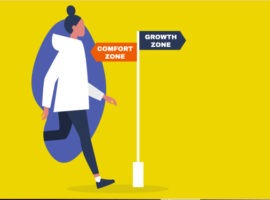The future of work after COVID: Employees spur Great Resignation
 The future of work after COVID demands that employers rethink their approach to the employee experience, as The Great Resignation proves.
The future of work after COVID demands that employers rethink their approach to the employee experience, as The Great Resignation proves.
The employee experience encompasses everything a worker learns, does, sees, and feels across the employee lifecycle. By focusing on employee experience management, business leaders worldwide have discovered a domino effect, not just to traditional HR metrics like turnover and absentee rates, but also on customer experience and overall profitability.
Ultimately, the experience you feel is the experience you deliver. A happy employee offers a better customer experience.
So, the best customer experience can only be achieved when businesses work toward a culture of experience, starting with employees. How do data and technology fit in?
 The future of work after COVID demands that employers rethink their approach to the employee experience, as The Great Resignation proves.
The future of work after COVID demands that employers rethink their approach to the employee experience, as The Great Resignation proves.
By gaining role-based insights based on the information you collect through employee experience surveys and other means, you can uncover areas of weakness and take action:
The shift to having a more targeted approach to employee experience management has been driven by several factors, including social media, changing demographics, and more volatile economic conditions.
It’s never been easier for employees to evaluate which companies provide great experiences and which ones don’t. Your best employees will have the most opportunities. To keep them on your roster, HR leaders and the organizations they represent must adopt new methods to heighten employee retention.
You can do this by continuously listening to the beliefs, emotions, and intentions of employees and leaders by and then acting on what you’ve learned to drive higher levels of engagement and become more employee-driven.You’ll gather an enormous amount of operational data from an employee throughout their time with you – from important personal details to training they’ve received and their salary history. By making use of tools to collect employee feedback at every vital touchpoint and then analyzing the results, you can better understand why things are happening and spot hidden trends.
 Learn how an experience management solution collects customer feedback and translates this feedback into powerful metrics for the business.
Learn how an experience management solution collects customer feedback and translates this feedback into powerful metrics for the business.
By combining operational data with experience data – what employees tell you about their experiences – you unlock greater insight into why things are happening and what you can do better. For example, operational data tells you that you spent $1 million on employee perks; experience data tells you whether your employees like those perks and what they’d prefer instead.
An employee feedback loop provides the context needed to make decisions and that will drive the most significant impact – and predict which changes will drive the highest ROI.
Employee engagement is a measure of someone’s attitude at work, how someone thinks (cognitive), feels (emotional), and acts (behavioral) in helping their employer meet their goals. You need to understand the engagement levels of your people, but also what causes those levels if you want to build a team with more engaged, motivated employees.
Employee engagement measures typically focus on four core areas:
Each element is as important as the next, so when measuring engagement, it’s essential to understand each one.
After all, someone can score highly for organizational commitment and be committed to an employer, but not to their role and vice versa. When you have all three elements present in an employee, it can add up to something greater than the sum of its parts.
While full-scale employee engagement technology enables programs that help become an employee-driven enterprise, they can also be limited in their flexibility and ability to capture frequent changes and developments in employee engagement and experience.
Fast and frequent surveys, done weekly or every few weeks, allow you to take the pulse of employee engagement. With more frequent feedback from your employees, you can measure fluctuations in engagement, require leaders to step in and make improvements, and track progress over time.
 For successful business transformation, leaders must take a people-first approach. Learn the benefits of putting people first in transformation projects, including a better bottom line.
For successful business transformation, leaders must take a people-first approach. Learn the benefits of putting people first in transformation projects, including a better bottom line.
Employee experience software can work with your existing HR technology to simplify the process of administering these surveys. People analytics teams can quickly deploy pulse surveys, collecting employee feedback into easy-to-use dashboards, and analyze data in real-time.
Built-in action planning tools allow you to turn insight into business impact for continuous performance management. That helps ensure employees are performing at their best and boosts the employee experience over the long term.